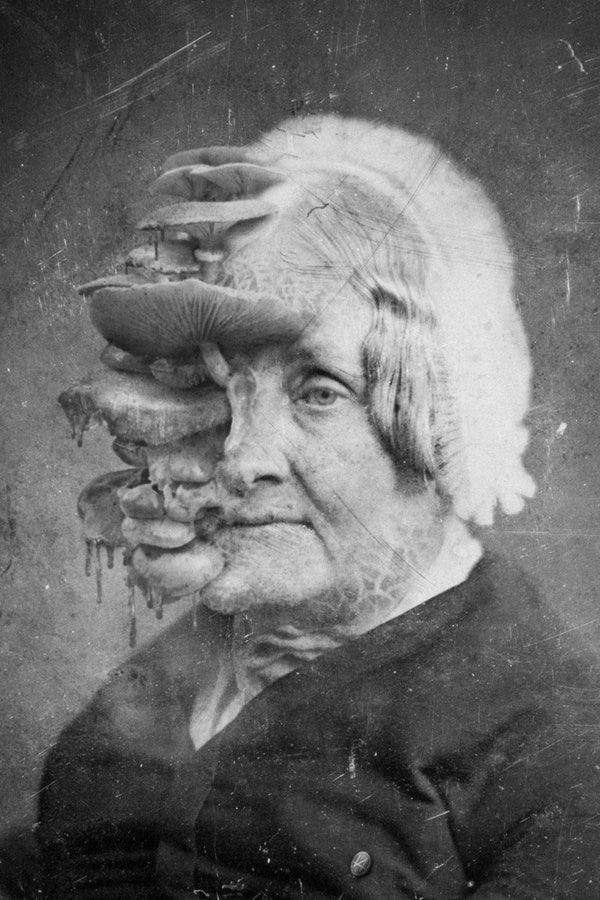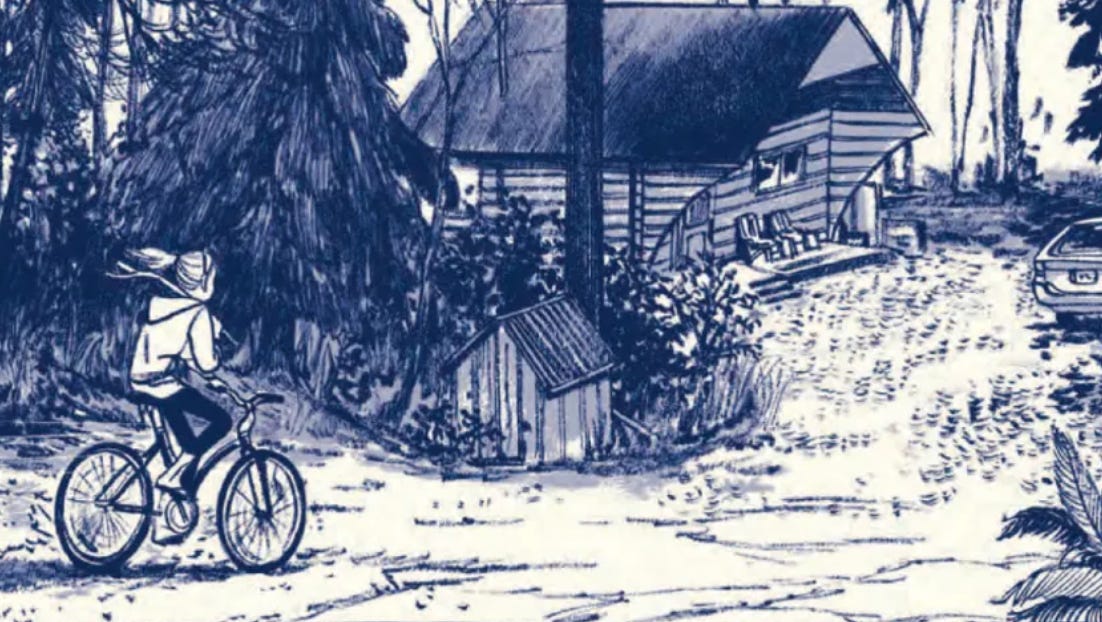Like many illustrators, I listen to podcasts and videos when I work. Most of what I’m used to being obsessed with on the side is reality TV drama, DnD/ tabletop games, internet scam story times, and most recently: horror. As an artist, I make work for all ages - lots of cute animals and colorful scenes, though I’m also known for being very easily spooked. Like, tap me on the shoulder and I’ll flinch as my voice drops with a quick “oh god” 8 out of 10 times type of easily spooked. I tended to associate horror with jump scares especially, so I avoided the genre like the plague.

One year, I felt really uninspired and honestly bored with my creative work. This isn’t to say I wasn’t proud of it, I still really like a lot of what I spent time on that year, I just got tired of only associating myself with “cute” things. This led me to trying some new kinds of podcasts and videos, which is how I fell back into the work of Valdevia, a phenomenal digital artist who uses photoshop to make life-like “photos” of cryptids, abominations, and strange worlds.
I’ve visited his work many times over the years, and really love this kind of photo manipulation work (it’s how I first started learning photoshop), though never tried looking into more similar artists before. Shortly after, I found another one of my now favorite creators, a Youtuber called Night Mind. He covers videos, games, and web based projects primarily, with horror being a common thread tying it all together. His analysis and critiques have been a bit of a hand hold into the genre for me, and I found these stories with darker themes to be really refreshing. I would never abandon drawing my cute lil’ gators (and other fun weirdos), but it helped me not feel stale about lighter kinds of stories and gave me a lot new to love.
A fun thing about analysis for horror personally, is that you ideally get a more approachable entry to the works covered, which is especially helpful for wimps like me. I should admit that while I can’t do jump scares, I find gore to be cool sometimes and am not easily grossed out. Trying out horror on my own made me realize that I really don’t mind being scared as long as there’s a good story and that knows how to be scary without just being “shocking”.
This also made me realize what I was missing before. A lot of media made for kids is associated with being “safe” and “comforting”. At the time, I found myself to be in a generally “uncomfortable” state of living with the stress of the unknown overwhelming me. Something unique about good horror is it tests your comfort levels and show you what true lack of control can look like. Some of it can be schadenfreude-esque, with seeing people get consequences to their actions. However for the more monstrous horrors, there’s a unique exhilaration in the unpredictability for something that lacks humanity in a story. When people don’t understand something we’re observing, we tend to project. There’s a lot at play with expectation when predicability is limited or out the window. I find that to be really freeing narratively, and refreshing as both an artist and viewer.
Still, I should mention that this gave me a newfound appreciation for how children’s and young adult stories approach the “uncomfortable” in different ways - among more “mundane” stories especially. Being able to work with limitations is a tough but important skill for artists, and I think that something I took a long time to learn is that it’s ok to exist and not be completely comfortable in your own skin sometimes, and it’s not always the end of the world.
One of my favorite graphic novels growing up was Mariko and Jillian Tamaki’s This One Summer. (Spoilers incoming but check it out if you haven’t) It’s a book both about escaping and confronting. A young teenage girl takes her annual summer vacation to the beach with her family and spends time with a life long friend, except this summer is drastically different from the rest. It deals with themes of puberty, rejection, depression, attempts at faking bravery to impress others, pregnancy, and loss among others. It’s a beautiful and raw book that doesn’t sugar coat much. It was one of the first comics to made me bask in my own discomfort, but to my own benefit. While one character nearly dies in the story, the main focus is on the protagonist lashing out partly due to not knowing how to navigate the changes surrounding her.
I understand that this is very different from “oh no a monster is going to eat me or worse!” but a lot of what I like about horror stories is seeing how characters navigate the unfamiliar and unknown.
I’m going to recommend two video based projects that you can watch. Both are completed as of now, don’t contain jump scares, and are about 40 minutes combined with the latter being much shorter. I consider these to be more unsettling than traditionally scary, and think they could serve as a bit of a bridge to trying similar works out, but no worries if they’re not your cup of tea. Here’s an additional link to a public index of indie projects in the horror and related fields called nightmind.info to sift through should it interest you!
Mr Samuel’s Teatime Stories is a 4 part series that has the aesthetic and approach of a 90’s live action kids show, covering topics such as grief, though can be interpreted very subjectively. It’s extremely odd, unsettling, and a potential tear jerker.
Morley Grove is a chilling 6 part series spanning less than 10 minutes of your time. It’s about a mysterious and horrifying monster and a missing child who people seem to have forgotten existed. It’s all in the style of pre-2010 Youtube and is incredible in its approach of suspense.
I don’t want to spoil much and highly recommend just going for it and giving these projects a try! I’ll always recommend books and artists who make works in my own field, but have been dying to talk about this. Have a lovely week!
-Jayme








Great insight, thanks Jayme. Have a great week too!